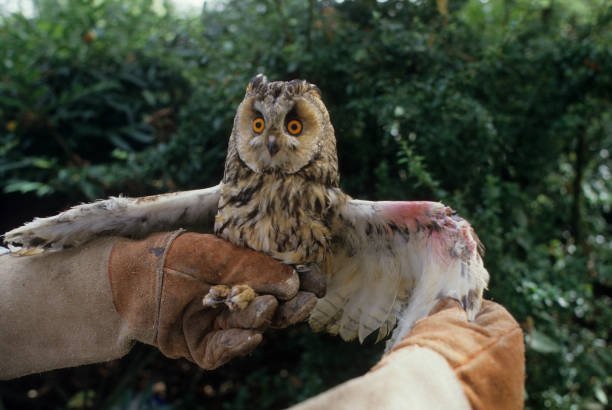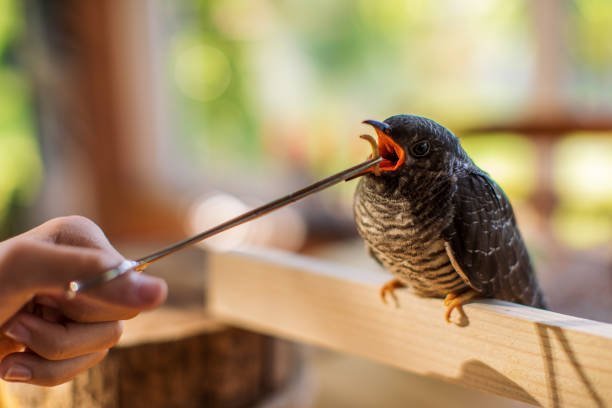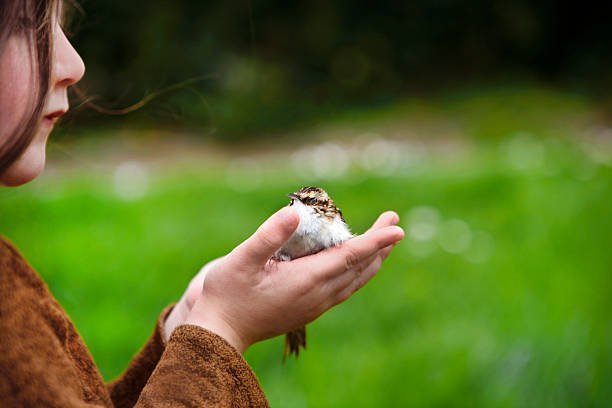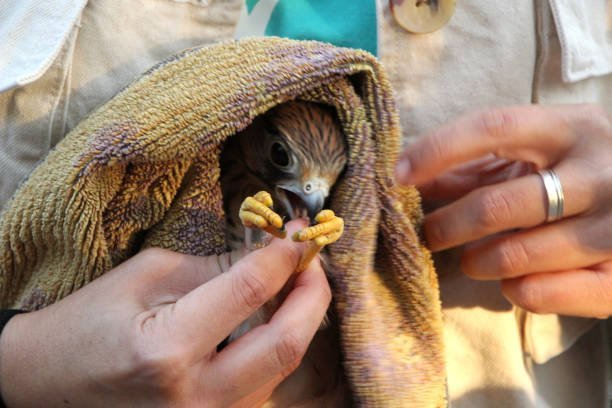Can I Volunteer for Bird Rescue and What Training Is Required?

Introduction:
In this article, we delve into the world of avian compassion and conservation, addressing a common question: “Can I volunteer for bird rescue, and what training is required?” Birds, with their remarkable diversity and ecological significance, often find themselves in precarious situations, from injured individuals to vulnerable nestlings. Many individuals, driven by their love for birds and the environment, wish to volunteer their time and effort to assist these feathered creatures.
In this exploration, we will navigate the path to becoming a bird rescue volunteer, shedding light on the training and qualifications needed. From understanding the basics of avian biology and behavior to mastering safe handling techniques, we will delve into the essential knowledge and skills that can empower individuals to contribute meaningfully to bird rescue and conservation efforts.
By the end of this article, aspiring bird rescue volunteers will have a clearer understanding of the steps required to embark on this rewarding journey and make a positive impact on the well-being of our avian co-inhabitants.
Eligibility and Age Requirements for Volunteers
Eligibility and age requirements for bird rescue volunteers are crucial to ensure the safety of both the birds and the volunteers themselves. Generally, most organizations require volunteers to be at least 18 years old, as working with wild birds can be physically demanding and sometimes challenging. Younger individuals may be allowed to volunteer with parental or guardian consent, but their roles may be limited to less strenuous tasks.
Beyond age, eligibility criteria may also include background checks and health assessments to guarantee the well-being of the birds and the security of sensitive information. These requirements are in place to ensure that volunteers are responsible and capable of handling the tasks associated with bird rescue and rehabilitation. By adhering to such criteria, organizations can maintain a safe and effective volunteer program.
Essential Training for Bird Rescue Assistance
Essential training for bird rescue assistance is essential for volunteers to perform their roles effectively and safely. Training typically covers a range of topics, beginning with bird identification. Volunteers must learn to differentiate between various bird species, as this knowledge helps determine appropriate care and release protocols.
Handling techniques are another critical aspect of training. Volunteers must understand how to safely and gently handle injured or distressed birds to minimize stress and further harm. This training includes methods for capturing, restraining, and transporting birds.
First aid and basic medical care training are also fundamental. Volunteers need to know how to administer emergency care to injured birds, such as treating wounds, stabilizing fractures, and providing proper nutrition. Additionally, volunteers often receive training in record-keeping, data collection, and communication, ensuring that they can contribute effectively to the organization’s overall mission.
Volunteer Roles and Responsibilities Defined
Clarifying volunteer roles and responsibilities is essential for maintaining a well-organized and efficient bird rescue operation. Volunteers may take on various roles depending on their skills, interests, and the organization’s needs.
Some common volunteer roles include bird care, where volunteers are responsible for feeding, cleaning enclosures, and monitoring the well-being of the birds. Others may focus on rescue and transportation, responding to calls about injured or distressed birds, and transporting them to the rehabilitation center. Some volunteers may have specialized roles, such as wildlife education or public outreach to raise awareness about bird conservation.
Regardless of the specific role, all volunteers share the responsibility of following the organization’s guidelines and protocols, prioritizing the welfare of the birds, and maintaining a professional and compassionate demeanor when interacting with the public. Clear role definitions help ensure that each volunteer contributes effectively to the organization’s mission and that the birds receive the care they need.
Safety Measures and Precautions for Volunteers
Volunteering for bird rescue organizations can be a rewarding experience, but it’s essential to prioritize safety. Safety measures and precautions are crucial to protect both volunteers and the birds. First and foremost, volunteers should be aware of potential risks associated with handling wild birds. Birds can carry diseases and parasites, so it’s essential to use protective gear like gloves and masks when handling them.
Additionally, volunteers should receive proper training in safe handling techniques. This includes understanding how to approach injured or distressed birds without causing further harm and how to use nets or carriers for capture. Following established protocols for handling and restraint is vital to minimize stress to the birds and reduce the risk of injury to volunteers.
Another critical safety measure is to be cautious around wildlife habitats. Volunteers should be aware of their surroundings, avoid disturbing nests or young birds, and be mindful of potential hazards like predators or other wildlife. Safety briefings and guidelines from the organization can help ensure volunteers are well-prepared to handle various situations while keeping themselves and the birds safe.
Tips for Finding Bird Rescue
Finding bird rescue organizations to volunteer with can be a straightforward process with the right guidance. The first step is to research local organizations in your area. You can use online resources, such as search engines and social media, to identify nearby bird rescue groups. Additionally, contacting your local animal shelters or wildlife rehabilitation centers can provide leads to bird rescue organizations in need of volunteers.
Networking can also be valuable. Attend community events, workshops, or seminars related to wildlife conservation and bird rescue. These events are excellent opportunities to connect with like-minded individuals and professionals who can direct you to reputable organizations seeking volunteers.
Furthermore, online platforms and volunteer websites often list opportunities with detailed descriptions of the roles available. Websites like VolunteerMatch, Idealist, or the official websites of bird rescue organizations can provide information on how to get involved. When reaching out to organizations, be sure to inquire about their specific volunteer requirements, expectations, and the application process.
Benefits of Bird Rescue Volunteering
Volunteering for bird rescue organizations offers numerous rewards and benefits. One of the most fulfilling aspects is knowing that you’re making a meaningful contribution to wildlife conservation. By assisting in the rescue, rehabilitation, and release of birds, you directly impact their chances of survival and contribute to the preservation of biodiversity.
Bird rescue volunteering also provides an opportunity to learn and grow. Volunteers gain valuable knowledge about avian biology, behavior, and conservation. You’ll develop practical skills, including bird handling, first aid, and record-keeping, which can be applied in various contexts. This hands-on experience can be especially valuable for individuals considering careers in wildlife biology or conservation.
Moreover, the sense of accomplishment and connection with nature that comes from bird rescue volunteering can improve mental well-being and reduce stress. It’s a chance to immerse yourself in the natural world, fostering a deeper appreciation for birds and the environment. Additionally, the camaraderie among volunteers and the satisfaction of seeing a rehabilitated bird return to the wild create a sense of community and purpose that can be personally rewarding.
Conclusion:
I hope this exploration of volunteering for bird rescue and the training required has been informative. Volunteering in this field offers a chance to make a significant impact on avian welfare and conservation efforts. To summarize, eligibility and age requirements vary, but a genuine passion for birds and a commitment to their well-being are universally valued traits. Essential training encompasses bird identification, handling techniques, and first aid, preparing volunteers to assist effectively and safely.
By adhering to these requirements and seeking out reputable bird rescue organizations, you can embark on a fulfilling journey of volunteering. The experience not only benefits the birds but also provides personal growth, practical skills, and a deeper connection to nature. Whether you are a novice or an experienced volunteer, the opportunity to contribute to bird rescue is a valuable endeavor, enriching both your life and the lives of the birds you aim to protect.










Post Comment